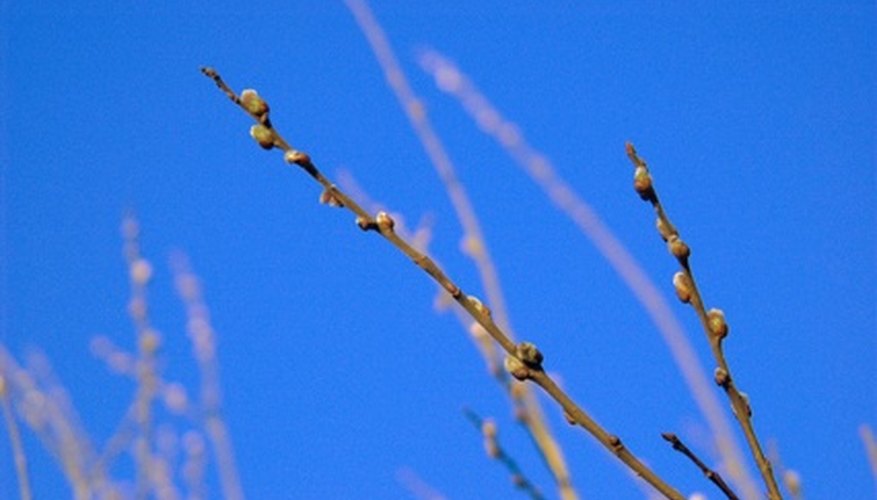Kilmarnock (Salix caprea) is also called European pussy willow or goat willow. This deciduous tree prefers sun to partial shade. Kilmarnock reaches 3.6 to 4.5 m (12 to 15 feet) tall. The dark green leaves are 5 to 10 cm (2 to 4 inches) long and grey coloured below. In the early spring, 2.5 to 5 cm (1 to 2 inch) catkins appear. Kilmarnock adapts to nearly any soil type, but it prefers moist soil. This willow tree responds well to regular pruning and withstands heavy pruning as well. Pruning is best when performed in the spring, while the tree is still dormant.
- Kilmarnock (Salix caprea) is also called European pussy willow or goat willow.
- Kilmarnock adapts to nearly any soil type, but it prefers moist soil.
Wash your hand pruners in soapy water. Rinse them in a solution of one part bleach and nine parts water. This eliminates any plant disease that might be hidden on the tool.
Prune the tips off the branches that are dragging on the ground. Branches that touch the ground can start to rot.
- Wash your hand pruners in soapy water.
- Prune the tips off the branches that are dragging on the ground.
Remove any branches that are growing in an awkward angle that goes against the shape of the crown. If yours is a weeping variety, cut the branches growing upward.
Remove any branches that are crossing or rubbing another branch. This causes weak spots in the branches. It is usually fine to remove one of the crossing branches and leave the strongest one.
Check the crown of the Kilmarnock for shape. Continue pruning around the crown to evenly balance the shape. This increases air circulation and produces a healthier tree.
- Remove any branches that are crossing or rubbing another branch.
- Continue pruning around the crown to evenly balance the shape.
Locate the graft on the tree, if there is one. Cut any suckers sprouting from the trunk below the graft. Remove suckers sprouting from the roots. This clears the tree trunk of debris and encourages upright growth.
TIP
Remove the smaller branches first, before working on the larger branches. It is desirable to keep the larger, stronger branches. Most of the time, problems are fixed by pruning the smaller branches away so the larger branches are saved.
WARNING
Without pruning, Salix caprea will have a tangle of branches in the crown area. The tree tends to become top-heavy and susceptible to high wind, heavy snow or ice damage.
